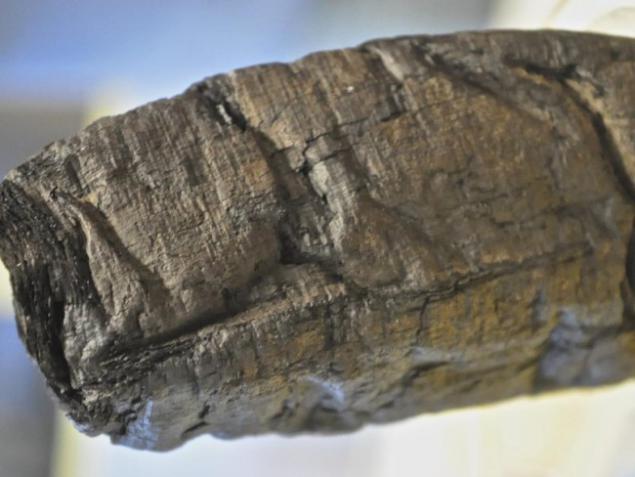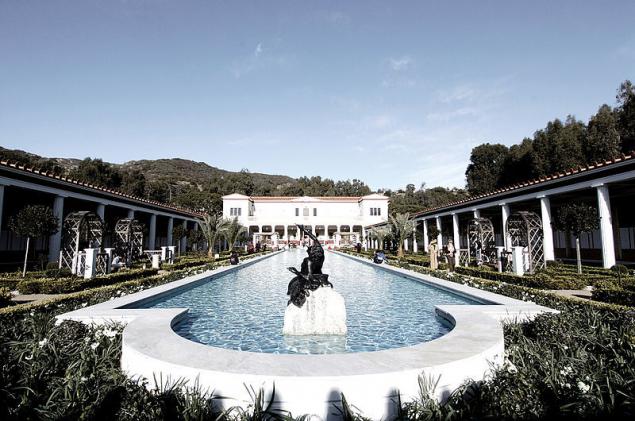Read the first words of the Herculaneum papyri spёkshihsya
 Bashny.Net
Bashny.Net

Ancient Roman city of Herculaneum were not fortunate enough to be near Vesuvius, so 24 August 79 he ceased to exist, sharing the fate of Pompeii. For many centuries forgot about it, until in 1710 to dig a well peasant came across the marble fragments. Since then, 300 years excavations in an attempt to restore the buildings of the ancient city.
One of the most significant finds of Herculaneum became rich villa belonging to a certain very educated citizen. The villa is found extensive library with lots of scrolls (papyrus), so that the building is well named - вилла Papyri .
The problem is that many of the papyri found so caked and charred that they can not expand and read without damaging. But recently, there was hope. With the help of X-ray scanning scientists смогли distinguish individual letters and words on papyrus , and in the future hope to fully restore the texts.

The Getty Villa in Malibu (USA) - A copy of the Roman Villa of the Papyri i>
To date, the villa is found about 1,800 scrolls. For those who managed to expand in the past century, the paint starts to degrade after contact with air, so that the scientists had to rewrite the text to other media and put up with the loss of artifacts.
Additionally, when deploying parts remained spёkshimisya each other, and then recover their contents of valuable not possible.
Scanning project scrolls began in 2007 at the French National Center for Scientific Research. To work used papyrus, presented Napoleon King of Naples in 1802.

charred papyrus from Herculaneum, once given to Napoleon i>
Scans revealed that in expanded state scrolls have a length of 11 to 15 meters. However, at the first stage it was not possible to recover any texts. The fact that the ink used for recording on a carbon basis, papyrus themselves have nearly the same chemical composition, so that the paint distinguish conventional methods has been difficult.
Only in 2013, a team from the Italian National Research Council has managed to develop a new method of X-ray imaging with phase contrast (x-ray phase-contrast tomography, XPCT), which is still allowed for the first time to recognize individual letters in these scrolls.
Instead, the study of patterns of absorption, XPCT analyzes the change in the phase of x-rays. Passing through the scroll in areas of different density, waves change their characteristics. A similar principle is used in medical X-rays. Only here you had to use a much more powerful and accurate radiation detectors - namely, equipment for particle accelerator European Synchrotron Radiation Facility in Grenoble.

24 letters of the Greek alphabet, distinguishable among the results of the scan i>
As a result, it was possible to identify not only the individual letters on different layers, but also a few individual words: ΠΙΠΤΟΙΕ («falls») and ΕΙΠΟΙ («say»).
Results of the study of Italian experts опубликованы January 20, 2015 in the journal Nature Communications.
So far, excavations at the Villa of the Papyri temporarily suspended due to lack of funds and the position of the Italian authorities (they prefer conservation, rather than research), but cleared of rocks, only 10% of the territory.
Now that you have an opportunity to read the scrolls, the Italian authorities may agree to continue the excavations. Previously, they had an argument, why destroy the cultural layer, if we still can not read these papyri.
Scientists suspect that the unexplored areas of the villa can be stored with the lost scrolls of dialog text of Aristotle, Sophocles plays, Euripides and Aeschylus. "Everyone who is interested in the ancient world, is always exciting opportunity to get at least one new paragraph, a chapter, - says Roger Macfarlane (Roger Macfarlane), classical scholar from Brigham Young University (Utah, USA). - Perspective get hundreds of new books is staggering. "
Source: geektimes.ru/post/244612/
Tags
See also
Quantum transitions consisting of:
Talk about life
Seven Wonders of the Solar System
Adventure-pilot ace
Historical monuments
What we have managed to destroy
Museum of Technology
Battle on the Ice
Manhole covers and their history

















